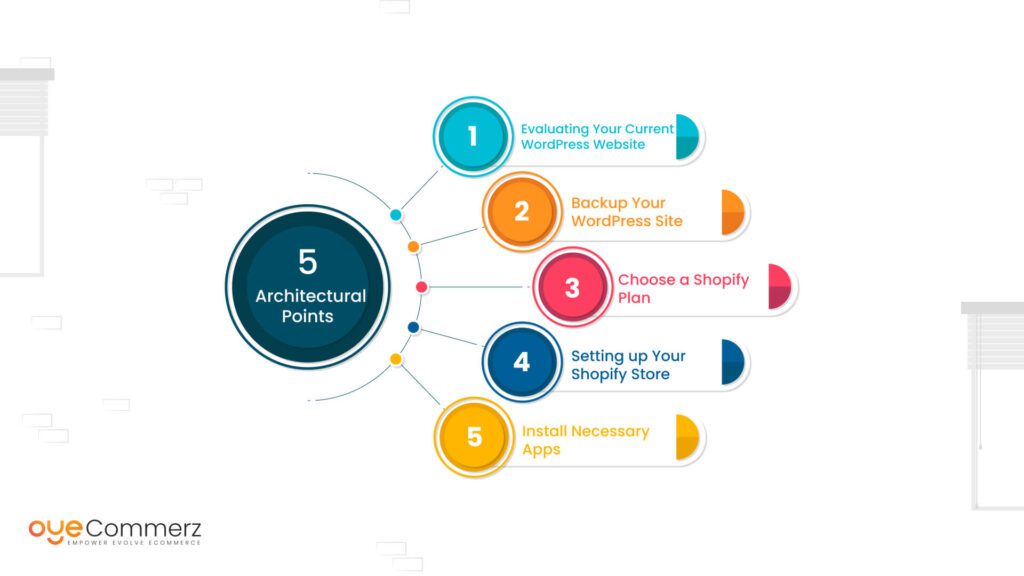Shifting from WordPress to Shopify marks an promising step in optimizing your e-commerce operations. As companies grow, selecting a platform that supports scalability, UX, and flexibility becomes crucial. Shopify is widely recognized as a favorite for e-commerce professionals, offering superior flexibility, data protection, and ease of use. In this guide, we will delve into the transformative impact of this migration, discuss the advantages, and provide practical tips to ensure a smooth move.
1. Top Reasons to Transition from WordPress to Shopify
WordPress, paired with WooCommerce, has served countless e-commerce platforms. However, as companies expand, issues like plugin dependency, data risks, and technical complexities can hinder progress. Shopify, designed explicitly for digital retail, addresses these issues with an comprehensive, user-friendly platform. Statistics supports this transition—Shopify powers over 4.4 million stores globally, with a documented 10% increase in sales conversion rates for numerous merchants post-switch.
2. Shopify's Perks for Thriving Online Stores
Shopify’s robust ecosystem is tailored for expanding brands. Its standout benefits are:
- Seamless Customization: Shopify offers over 80 professionally designed themes.
- Integrated Tools: Features like Shopify Payments and built-in SEO save time and effort.
- International Expansion: Multi-currency support and regional customization enable brands to expand internationally.
Additionally, Shopify boasts an uptime rate of 99.98%, guaranteeing your website remains accessible.
3. Preparing for WordPress to Shopify Migration
Prior to starting the migration process, evaluate your current store. Review inventory details, customer details, and search engine rankings. Tools like Shopify’s Migration Kit or third-party solutions help ease the transition. Create a detailed strategy, making sure all assets—product descriptions, media files, and blog content—are optimized for transfer.
4. Data Migration: A Critical Step
Transferring your data is a cornerstone of a successful platform switch. When moving from WordPress to Shopify, prioritize:
- Inventory Details: SKU, descriptions, and groupings.
- Customer Data: Emails, purchase records, and preferences.
- Search Engine Considerations: Preserve meta tags, URLs, and forwarding paths to maintain search rankings.
Use Best Shopify migration services apps Shopify migration services like LitExtension to facilitate seamless migration while minimizing errors.
5. Tailoring Your Shopify Store to Fit Your Brand
Post-migration, personalizing your Shopify store helps it aligns with your business identity. Utilize Shopify’s intuitive page builder to design pages effortlessly. Shopify's templates are mobile-responsive, ensuring a seamless user experience across platforms—a critical factor, given 74% of online shopping comes from mobile visitors.
6. Maintaining SEO During Migration
Search engine optimization is crucial for maintaining your online presence during migration. Shopify is highly optimized for search engines with clean URL structures, built-in optimization tools, and smooth content management. Ensure:
- Implement 301 redirects for existing links.
- Optimize new pages with keyword-rich content.
- Leverage plugins like Plug in SEO to monitor performance post-migration.
7. Essential Tests After Migrating to Shopify
Once the migration is complete, run detailed checks.
Review: - Website speed (Shopify delivers faster speeds compared to WP).
- Functionality of payment gateways and transaction flow.
- Adaptability across devices.
Testing guarantees your store provides a smooth shopping journey from day one.
8. Real-Life Success Story
One such migration success story is Gymshark, a sportswear company that transitioned to Shopify. Post-migration, the company saw a 60% increase in mobile sales and reduced site downtime. This showcases the capabilities of Shopify in enhancing e-commerce growth.
9. Challenges and Solutions
Migration comes with challenges, such as data integrity and adjusting tailored features. However, Shopify’s robust support and third-party experts simplify the process. Partnering with experienced Shopify developers helps guarantee a smooth transition.
10. Starting Your Journey with Shopify
Migrating from WordPress to Shopify marks a forward-thinking approach to e-commerce. By addressing scalability, simplifying management, and improving buyer satisfaction, Shopify enables companies to thrive in challenging industries.
Conclusion
Switching from WP to Shopify is a strategic move that can greatly enhance your online business performance. With a robust migration plan, the right tools, and professional guidance, you can unlock new success milestones.
Excited to start the journey? Let’s discuss how our Shopify migration services can revolutionize your e-commerce platform. Get in touch today, or ask yourself: Can your business afford to miss out on Shopify’s growth potential?
